World SSBN. Part 1
A nuclear-powered submarine with ballistic missiles (SSBN) is intended for launching nuclear missile strikes against strategically important military-industrial facilities and administrative-political centers of the enemy. The advantage of SSBNs being on patrol over other means of nuclear deterrence lies in its inherent survivability, which follows from the difficulty of its detection. This guarantees a nuclear missile strike against the enemy in the event of the start of a full-scale conflict. A SSBN can also be an effective means of a first - disarming strike, secretly approaching areas of intended targets, reducing the flight time of ballistic missiles (SLBMs).
In addition to the term SSBN in Russia, the designation is also used - the Strategic Missile Submarine Cruiser (SSBN).
USSR / RUSSIA
The construction of ballistic missile submarines began in the late 50s. In the USSR, almost simultaneously, a series of diesel and nuclear submarines of this purpose was laid. The boats were built by shock, inconceivable for the present time pace.
The head diesel-electric submarines (diesel-electric submarines) of the 629, B-92 and B-93 projects were laid in Severodvinsk and Komsomolsk-on-Amur in the 1957 year, at the end of the 1958 of the year they began testing, and the serial construction of boats began lasted until 1962 year. In total, 24 submarines of this type were built. Including one boat on the ZLK for the PRC Navy.
The boats were originally designed to equip the D-2 complex with ballistic missiles. Each submarine carried three P-13-type liquid-propellant missiles placed in the cabin fencing. Start was carried out from the surface position. P-13 were the first specialized ballistic missiles in the world, designed to arm submarines. The single-stage rocket, whose launch mass was 13,7 tons, carried a detachable warhead equipped with a high-power thermonuclear charge. The launch range is 650 kilometers, the circular probable deviation is 4 kilometers, which ensured the defeat of only square targets. Later, part of the boats in the process of overhaul was re-equipped with the D-4 complex with the underwater launch of the P-21 missiles.
The construction of the first Soviet nuclear-powered submarine missile carrier of the 658 project began in September of 1958, and in 1960, the headboat of this project has already been commissioned. Many technical solutions, parts and components were borrowed from the first Soviet nuclear submarine of the 627 project. This greatly facilitated the design and accelerated construction.
The differences from pr. 627 consisted in the implementation of the missile (fourth) compartment, almost entirely borrowed from the diesel-electric submarines of pr. 629. Replacing spherical bulkheads with flat ones, designed for greater pressure, install a RCP device (to replenish compressed air at the periscope depth), as well as a more powerful and sophisticated ventilation and air conditioning system. In addition, the composition of the torpedo weapon was changed. The lines of the light housing of the submarine of the 658 Ave. were the same as that of the submarine subway of the 629 Ave. Due to this, good seaworthiness was ensured and the superstructure deck flooding decreased, which, in turn, allowed launching of rockets from the upper edge of the mines.
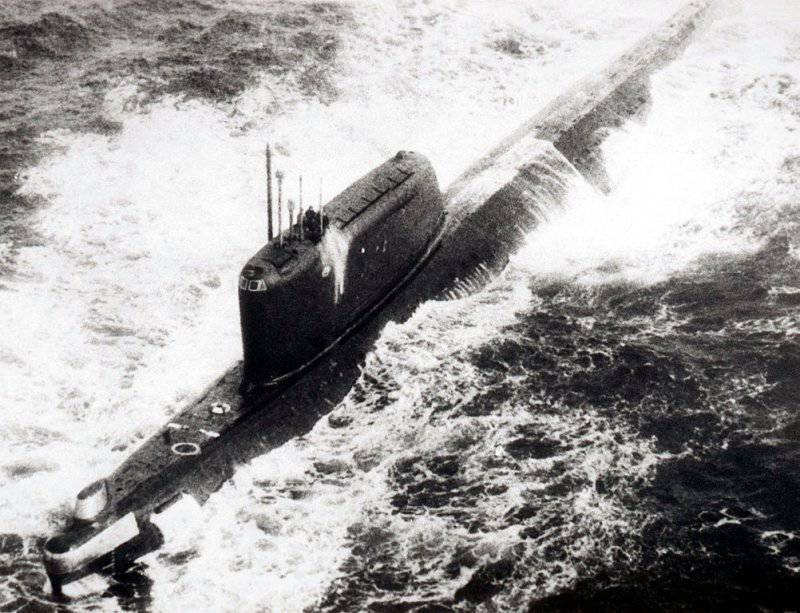
Initially, the boats were designed for the D-2 armament complex, but in 1958, they decided to start developing a project that included re-equipping the submarine with more advanced missiles that had an underwater launch and an increased range.
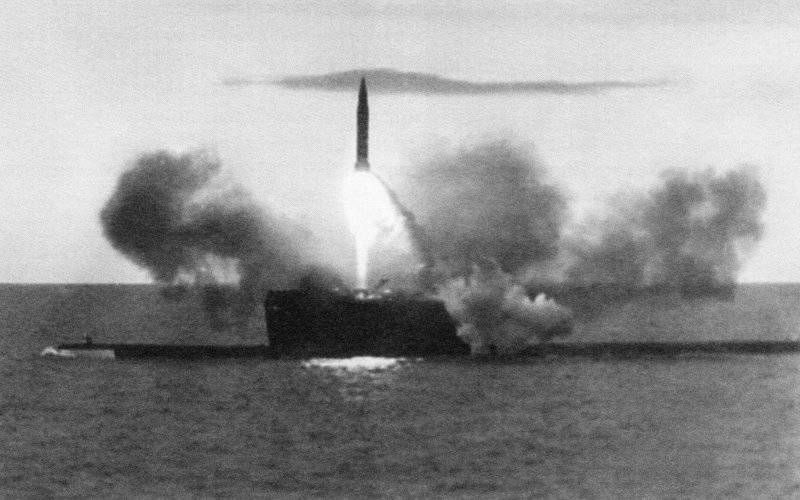
It was assumed that the new complex will be installed on nuclear-powered ships in the process of modernization and major repairs. Modernized boats assigned the designation of the project 658-M.
To accommodate the P-21 missiles of the D-4 complex, the same launchers were used as for the P-13 missiles, since they initially had a larger internal diameter. To ensure the underwater launch of missiles, a system for automatically maintaining a given depth was developed.
The creation of Soviet first-generation submarine missile carriers allowed the USSR to increase the nuclear deterrence potential, and, despite the accidents and the victims associated with them, gain invaluable experience in operating ships of this type and prepare personnel for more advanced ships.
The first Soviet nuclear-powered nuclear-powered rocket ship, compared to the American George Washington SSBN, had higher surface and submarine speeds and a greater depth of immersion. At the same time, it was significantly inferior in noise and characteristics of underwater exploration assets. American boats far exceeded the Soviet ones in the number of ballistic missiles on board, carrying the Polaris A16 mine installations against the 1 on the first Soviet SSBNs.
This led to the fact that the circulation of boats pr.658 / 658М was limited to eight units. Soon the next generation submarine missile carriers replaced them at shipyards.
By the beginning of the 1980s, the USSR succeeded in creating a sufficiently effective Naval Nuclear Deterrence Force (NSNF) —the degree of realization of its combat potential, having increased 3,25 times as compared to 1967 in the year. The increase in efficiency was influenced by: quantitative and qualitative improvement of the naval personnel of the USSR strategic nuclear forces, an increase in the ammunition load on the Soviet SSBNs and the introduction of an RPG on an SLBM, and an increase in the technical reliability of Soviet SLBMs. The combat stability of the Soviet SSBNs armed with intercontinental SLBMs increased due to the transfer of combat patrol areas to the zones of domination of the Soviet Navy in the Barents, Japan and Okhotsk seas. The technical reliability of Soviet SLBMs was comparable to the reliability of American missiles.
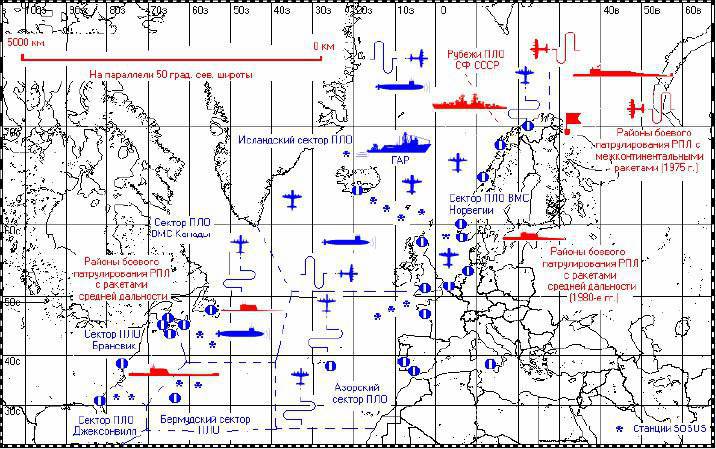
Military patrol areas of missile submarines of the USSR in the Atlantic theater
At the end of the 80-x, the USSR Navy included 64 nuclear and 15 diesel submarines with ballistic missiles. On average, Soviet SSBNs went on combat patrols 4-5 times less often than American missile carriers. This phenomenon was caused by inadequate, the number of ship personnel, the construction of the infrastructure of the base and service, as well as the low technical reliability of nuclear power plants of the first Soviet nuclear submarines. That did not allow the use of ships with the required intensity, but because of the development of technical resources and delays in carrying out repairs led to the accumulation of non-combat-ready reserve
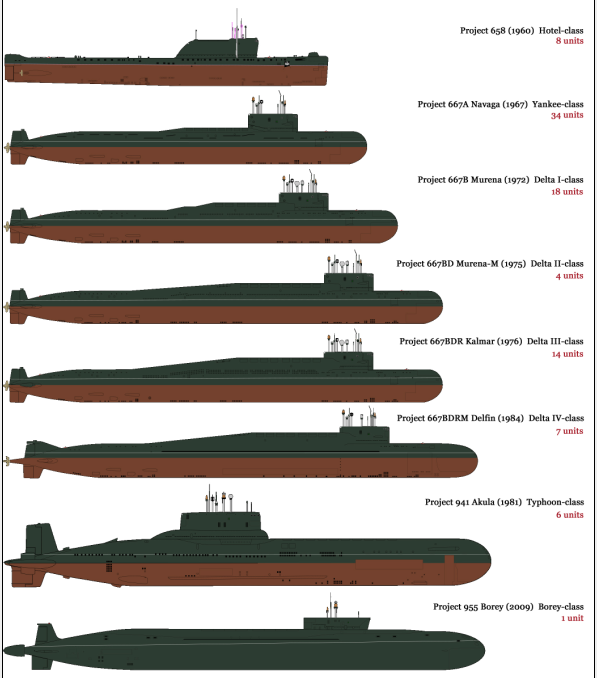
The lack of standardization and unification in the design, resulting in a large number of projects of missile submarines (RPL) armed with various types of missiles. For example, in 1982, the Navy of the USSR had 86 RPL of nine projects armed with seven types of SLBMs, which naturally increased the cost of their operation.
By developing extensively, by the middle of the 1970-s, the Soviet NSNF reached a quantitative parity with the United States NSFR - in the number of RPLs and SLBMs. The US strategic nuclear forces, developing in an intensive way, have always been ahead of the USSR in quality indicators.
Over the years since the collapse of the USSR, the number of strategic missile carriers in the Russian Navy has decreased by about 10 times. In combat readiness, the Northern and Pacific Fleets include 7 SSBNs of the 667BDR and 667BDRM projects built in 1979-1990. SSBN project 941 removed from the current composition fleet.
SSBN TK-208 "Dmitry Donskoy" was upgraded to pr.941UM. The boat is used to test the Bulava-M D-30 complex, for which two launchers have been converted to ballistic P-30 ballistic missiles.
Satellite image Google Earth: SSBT TK-208 "Dmitry Donskoy", near the modernized for India, the aircraft carrier "Admiral Gorshkov"
RPSN K-535 "Yuri Dolgoruky" - the lead ship of the 955 "Borey" project was enlisted in the lists of the Russian Navy ships 19 August 1995. Due to the lack of funding and changes in the project, the construction was very difficult. To speed up the construction, the reserve of the submarine of the 971 “Pike-B” project K-137 “Cougar” was used. 12 February The 2008 of the year the boat was launched from a floating dock into the water and placed at the extension wall.
Until recently, she passed state tests. At the moment, RPSN K-535 is being repaired in Severodvinsk.
Russian strategic submarine missile carriers have two permanent bases: Gadzhievo in the Northern Fleet and Rybachy in the Pacific Fleet.
In Gadzhiyevo, located on the Kola Peninsula, there are five existing SSBNs of the 667BDRM Dolphin Ave. Apparently, there will also be SSBN Ave 955 "Borey", which in the future should replace the "Dolphins".
Nuclear submarines of the Pacific Fleet are based in Rybachy not far from Petropavlovsk-Kamchatsky. There, in the intervals between hikes, there are two boats of the 667BDR Kalmar Ave. There, in Rybachy, on the other side of the bay, there is a complex for the maintenance and repair of submarines.
At present, the Russian naval forces of nuclear deterrence are going through hard times and need modernization and renewal. Unfortunately, the adoption of new strategic missile carriers is heavily delayed. This is largely due to the unreliability and lack of knowledge of the D-30 missile system.
USA
The first American SSRB “George Washington” was launched in December 1959 of the year and entered its first combat patrol from the forward base of the US Navy in Holy Loch (United Kingdom) in the autumn of the year 1960. Originally, the boats of this project were armed with the Polaris A-16 ballistic missiles 1. Accuracy at test launches at a maximum range of 2200 km was 900 m, which was a good indicator for a sea-based missile.
SSBN “J. Washington ”was designed on the basis of a“ Skipjack ”nuclear torpedo boat, into the hull of which an 40-meter central section was added to accommodate missile silos, rocket fire control systems, navigation equipment and auxiliary mechanisms. The overall layout of the “George Washington” type boats with vertical mines located behind the deckhouse was very successful and became a classic scheme for submarine strategic missile carriers.
For the armament of nuclear submarines, the Americans chose the development of solid-propellant rockets as much more compact and fireproof, and requiring less maintenance costs than liquid-powered submarine-launched ballistic missiles. This direction, as it became clear later, turned out to be more promising.
During the scheduled repair of the 1964-67, the Washington was reequipped with the Polaris A-3 missiles with a range of about 4600 km and a head part of the scattering (cluster) type (MRV technology, three nuclear warheads up to 200 km each).
The last boat of this type was withdrawn from the fleet at the start of the 1985 of the year.
By the end of the 60's, the American submarine strategic system was completely ready. The 41 SSBNs deployed the 656 SLBMs of the Polaris A-2 and Polaris A-3 types, which could deliver nuclear warheads to the enemy’s 1552 territory. The boats were part of the Atlantic (31 type “Lafayette”) and the Pacific Fleets (10 type “J. Washington”).
In 1991, as part of the USALNS, there were 8 SSBNs with PN XDUMX APRPs C & D APX 128, 3 SSBNs with NNRX APRTs C2080 18 XARS and 352 SSRAS APRN APRTs; YABZ). The total number of warheads was 4. Thus, the SSBN was 2816% of the available nuclear potential.
Currently, the US Navy is equipped with Ohio-type 14 SSBNs, each carrying a Trident II D24 5 ballistic missile. Unlike Russia, the main US nuclear potential is located precisely on the SSBN.
At the moment, in accordance with the SALT agreement, missiles on submarines cannot carry more 8 warheads. In 2007, the total number of warheads deployed in the United States on an SLBM was 2018 pcs.
In the US, there are two facilities where SSBNs are based. On the Pacific coast is in Bangor, WA. On the Atlantic coast is Kings Bay, Georgia. Both naval bases have a developed infrastructure for the maintenance and servicing of SSBNs.
UNITED KINGDOM
The first carriers of British nuclear bombs were strategic bombers.
From the beginning of 60-s after the creation and mass production of the air defense system in the USSR and as a result of the qualitative strengthening of air defense, the British leadership decided to change the priorities in the field of nuclear deterrence. The program for the creation of ground-based ballistic missiles failed for several reasons, and it was decided to use all the resources when creating the SSBNs.
Great help to its strategic ally in this matter was rendered by the USA. Design work on the British SSBN started at the beginning of the 60-s. The project was based on the American La-Fayette SSBN.
The construction of a series of four submarines of the Resolution type began in the UK in 1963 year. In October, the Resolution 1967, the lead boat in the series, was handed over to the fleet. Initially, all the English SSBNs were armed with sixteen Polaris A3 SLBMs with a range of up to 4600 km, equipped with a scattering-type warhead with three warheads up to 200 Kt each. It was later created by the FER which was equipped with six 40-50 CT warheads. Such warheads can be aimed at individual targets located at a distance of 65-70 km from each other.
British missile submarines began patrolling in 1969, with access to the North Atlantic. In peacetime, up to two SSBNs should be constantly at sea. With the exacerbation of the international situation in the areas of launching rockets were removed from the base and other SSBNs.
All boats of the Resolution type remained in service until the middle of the 1990s, until they were gradually replaced by more advanced SSBNs of the Vanguard type.
After withdrawal from the fleet, the submarines were disarmed, spent nuclear fuel was unloaded from the reactors. As long as the disposal of submarines or their submersion is not possible due to residual radiation, all the SSBNs of the “Resolution” project are kept in Rosayte.
At the beginning of the 90-s of the Vangard-type SSBNs, they replaced the earlier resolution-type missile carriers. At the moment there are four such boats in the British fleet. The ammunition of the SSRB “Resolution” consists of sixteen “Trident-2 D5” SLBMs, each of which could be equipped with fourteen 100 Ct combat units. However, for reasons of economy, only 58 missiles were purchased, which made it possible to provide only three ships with full ammunition. In addition, only 48 warheads should be on the boat instead of the state-provided 96.
All British SSBNs are based in Scotland, in the Clyde Naval Base area, in the Faslane base station, in the Gulf of Loch.
Google Earth satellite image: Vanguard type SSBNs at the Faslane location
Sources:
http://flot.com/publications/books/shelf/vedernikov/ussr-usa/4.htm?print=Y
http://russianforces.org/blog/
http://geimint.blogspot.ru/2007/12/ssbn-home-ports-in-imagery.html
http://russian-ships.info/today/
All satellite images courtesy of Google Earth.
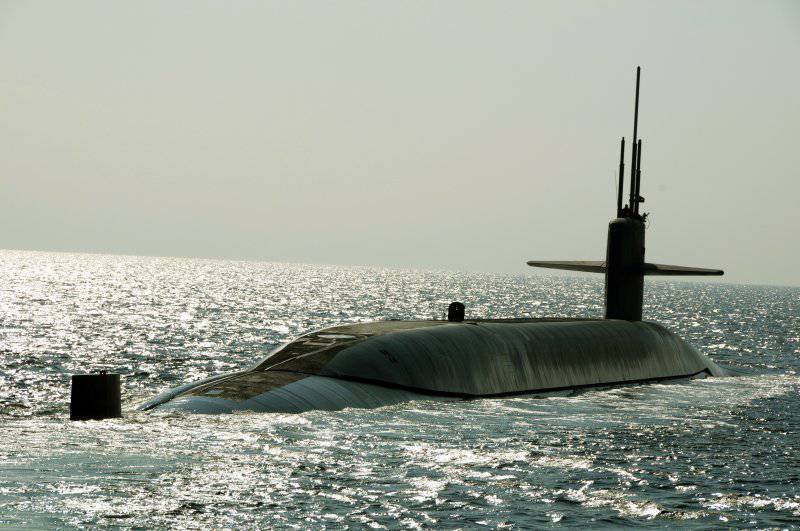
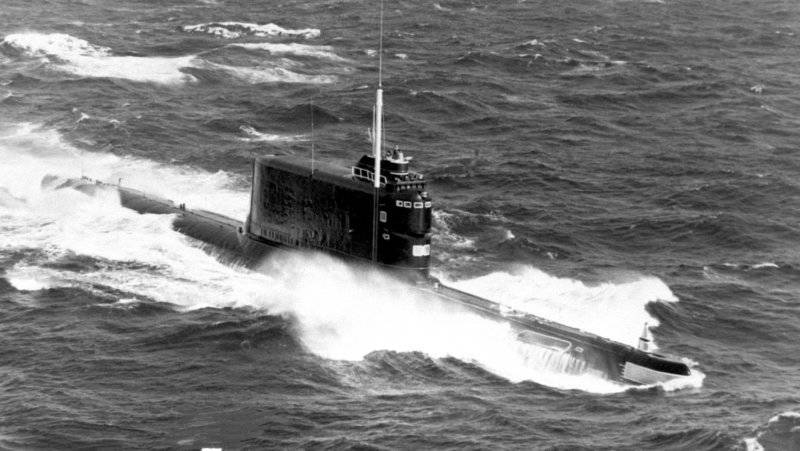
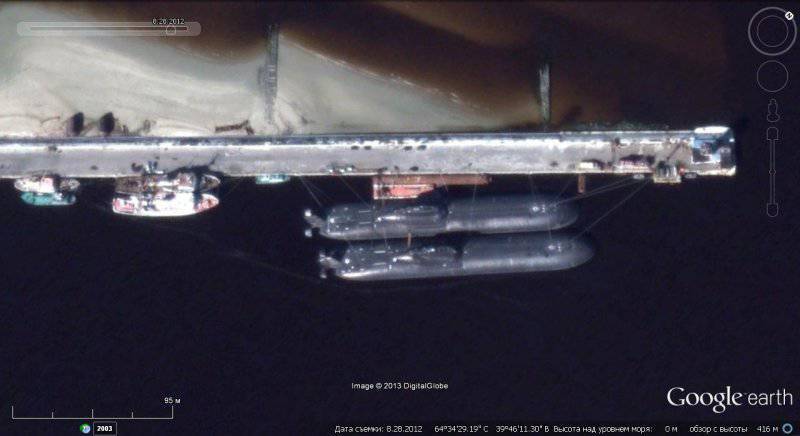
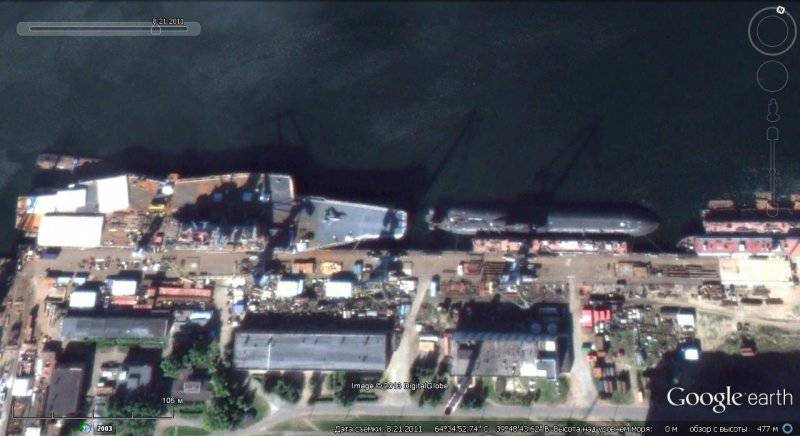

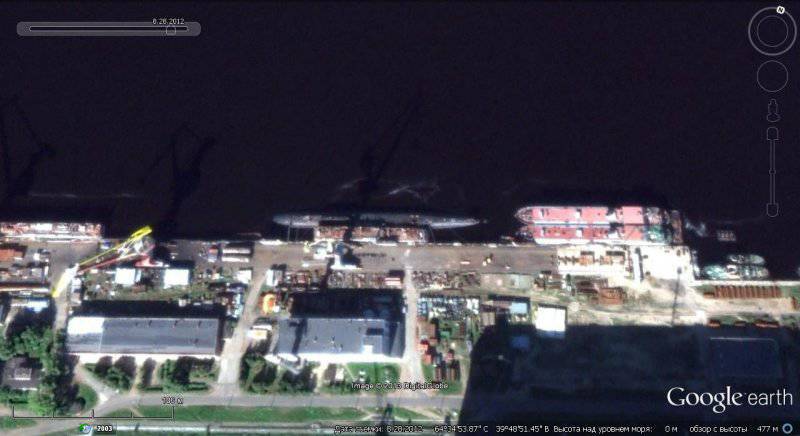
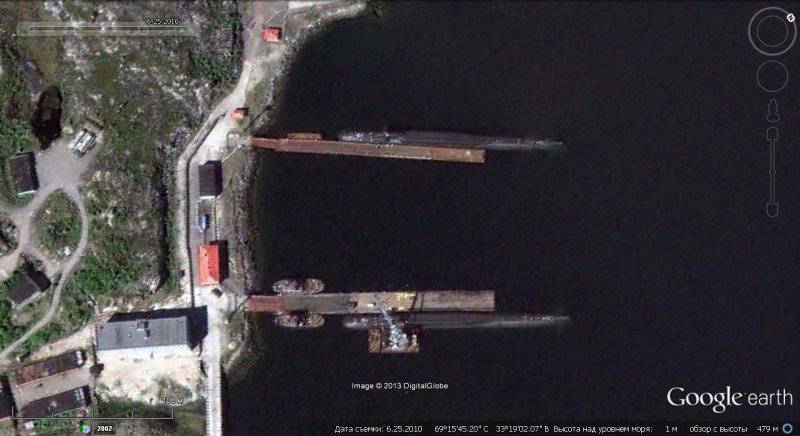
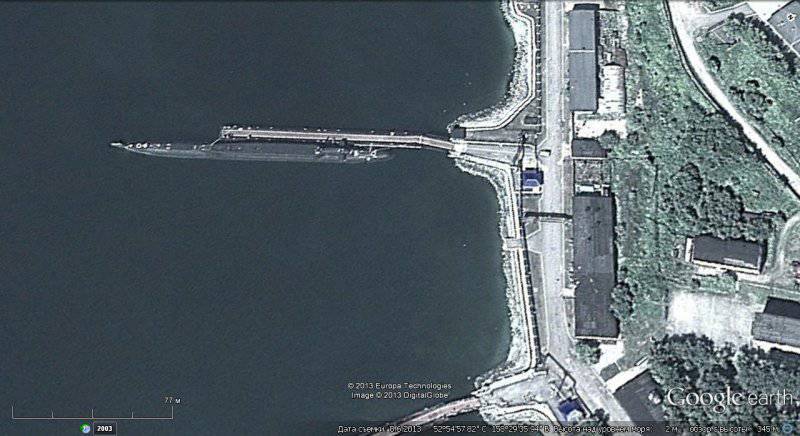
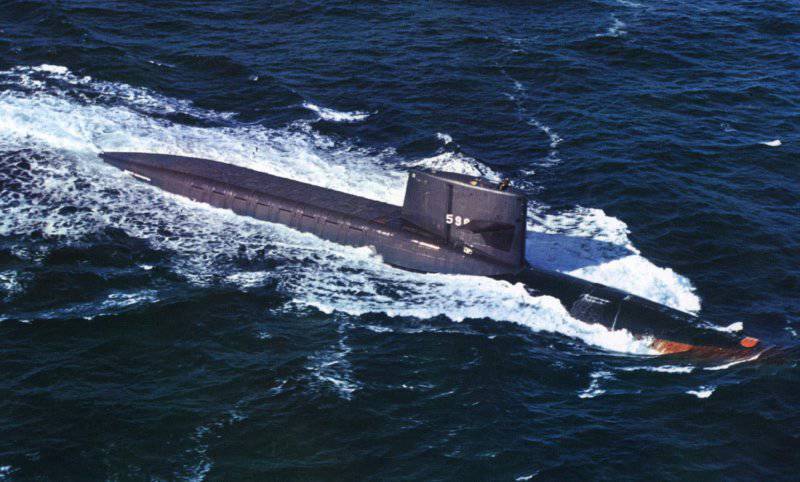
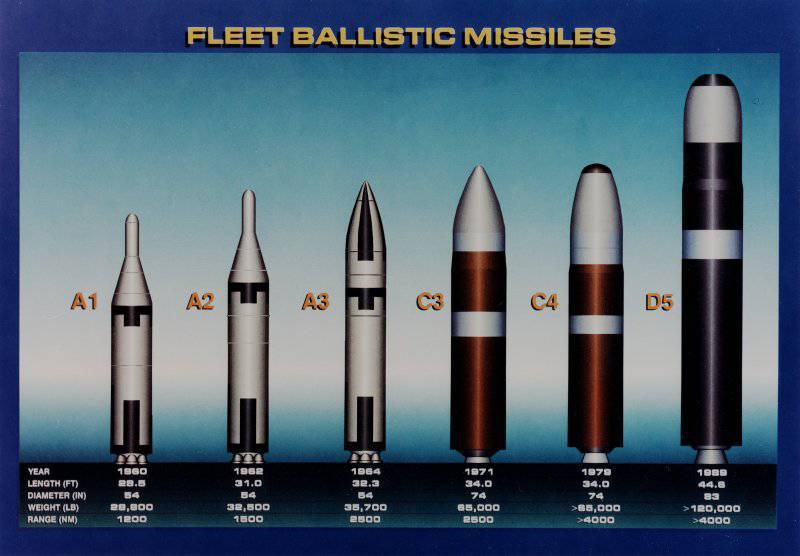
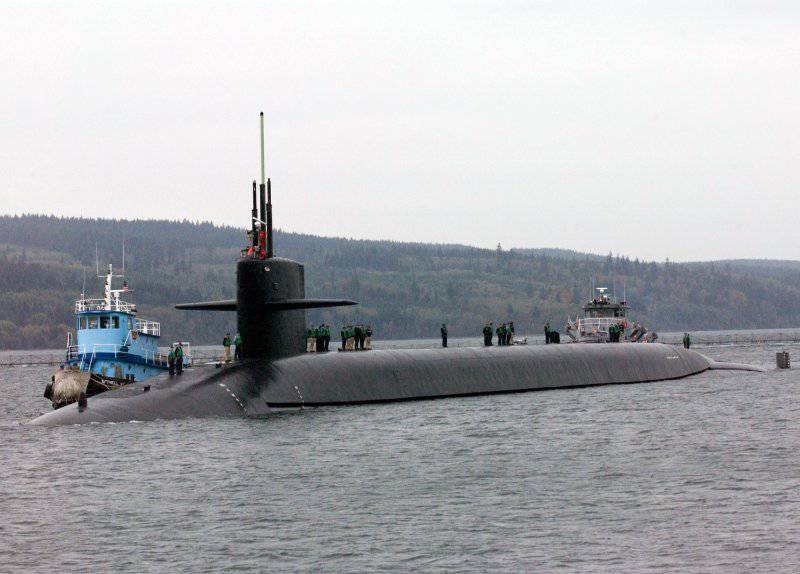
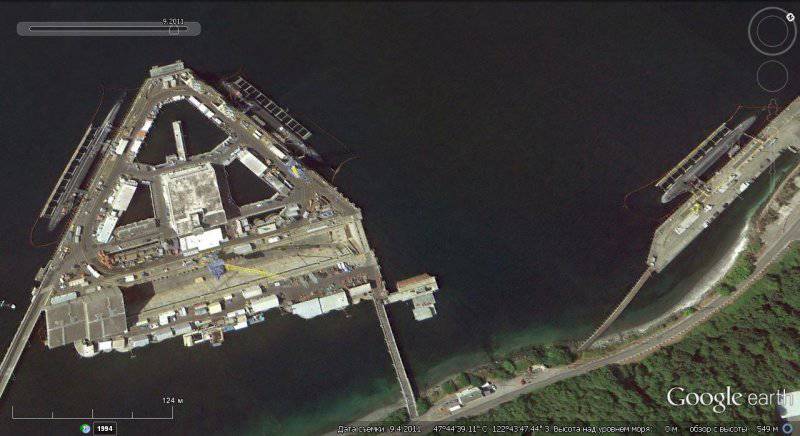
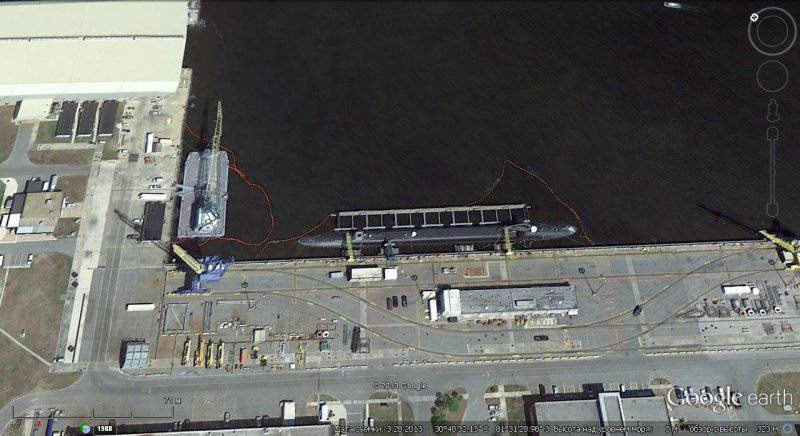
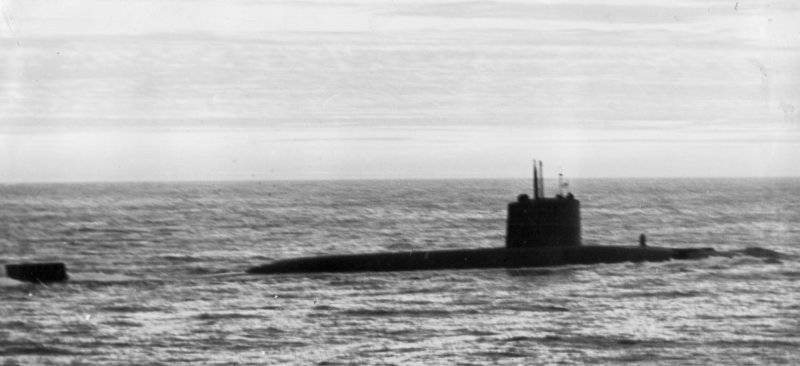
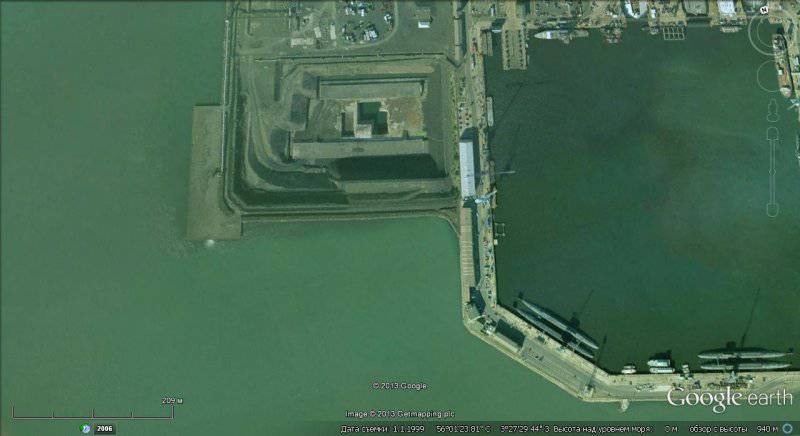

Information